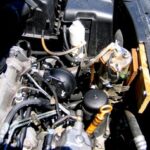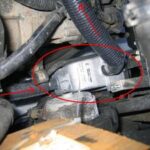There are many different terms that are used in the hot rod world, this terminology is consistent from the import tuners to the V8 guys. But, unfortunately many of these people lack the understanding of what these terms really mean and their effects inside their engine. I’m going to explain the most common terms related to camshafts and valve trains that people in the performance world use daily.
Lift--lift is the measurement in which how far an intake or exhaust valve protrudes into the combustion chamber; and foreign made cars lift is measured in millimeters and in domestic’s is measured in thousandths of an inch. The camshaft is directly responsible for the amount of lift or distance that an intake or exhaust valve protrudes into the combustion chamber. The more lift the performance camshaft has the greater the chance of piston to valve interference. This is why many high-performance engines have very deep valve notches on the top of the pistons. When selecting a camshaft the amount of lift should be noted with great importance because of the possible incompatibility of a radical camshaft with a stock piston. The farther that an intake valve or exhaust valve protrudes into the chamber is directly correlated to extra time that the valve is open and the further the valve is from the valve seat the more airflow will pass into the chamber creating greater volumetric efficiency or horsepower potential.
Duration–duration is measured in degrees, these degrees correlate ultimately to the amount of degrees that the crankshaft rotates which is 360°. If a complete rotation of a piston operates on a 360° value then it would be impossible for a camshaft to also have this same amount of degrees in its rotation because of piston to valve interference this is why most full race camshafts do not exceed 260° of real (not advertised) duration. Duration even though it is measured in degrees is more of a measurement of time or the dwell that the camshaft resides in the combustion chamber. The longer the valve stays in the combustion chamber the more airflow can pass the valve seat and ultimately more air and fuel will enter the chamber. Just like the lift, duration is also responsible for potential piston to valve interference. If the valve stays open too long or too many degrees in correlation to the crankshaft rotation then when the piston comes up to top dead center it could run directly into the valve.
Dwell–dwell is the measurement of time in which an intake or exhaust valve stays inside the combustion chamber when it is fully open. The amount of dwell varies from camshaft to camshaft depending upon the sum of the lift and the duration.
Tricks
**When increasing an engines horsepower potential there are a few tricks to take into consideration. When using very radically profiled camshafts that have a great amount of duration and lift one needs to have the right valve train components to take advantage of this extreme duration and lift profiled camshaft. One trick is using higher spring tension valve springs, the reason for this is that at high engine speed the amount of momentum and the speed in which the intake or exhaust valve enters the chamber can cause it to dwell (or float) longer than what the manufacturers advertised lift and duration on the camshaft is, thus causing potential problems with piston to valve interference because the valve is staying open in the combustion chamber for too long of a time. By increasing the tension of the valve springs it will ensure that the valve is forced back into it’s closed position quickly and efficiently without staying in the chamber too long. One potential problem of heavy duty spring rated valve springs is that they are so stiff that they can rob horsepower from the engine. This happens because of the added resistance that the spring has when the rocker arms are trying to push the spring down to open and close the valve. This loss of horsepower is different according to each engine depending upon valves per cylinder, displacement, and the amount of spring pressure. Imagine if a valve spring from the factory takes 100lbs of pressure to force it down and you add springs that have 230lbs of spring pressure to accommodate the new camshaft you installed then there is that much more resistance every time the crankshaft makes a complete rotation.
Ways to get around power robbing valve springs
However expensive, there are ways to get around heavy duty valve springs, one can use lighter pound rated valve springs if you have lighter valve train parts such as exotic light weight metal components like titanium valves and titanium valve spring retainers. These components can make use of valve springs with less tension (giving you free horsepower from the clutches of the power robbing resistance of heavy duty springs) because they have an advantage over stock steel components when it comes to valve float. The valves are much lighter, typically half as light as stock; so when they are pushed into the combustion chamber and fully opened they do not create as much momentum as a stock steel valve which allows them to quickly return back to the valve seat. In addition to titanium valves, titanium retainers are also used to keep additional weight off the top of the valve spring; additional weight in this department can also cause unwanted valve dwell (or float) because extra weight on top of the spring in high rpm is just added and unwanted weight and momentum that can cause the valve to stay down (or completely open) too long.
General concepts to remember
**Lightweight titanium valves and retainers allow you to use more radical camshafts with having to use extremely high tension springs.
**The more spring tension (especially smaller engines like four cylinders) the more power you are going to lose. 4 valve per cylinder four cylinders do not typically benefit to well from high tension springs, you could actually put in a high performance camshaft and actually lose power from the extreme tension of the valve springs.
**Titanium valves are expensive, but worth it; especially if your going to oversized valves, they are the only way to fly.
**Make sure that your factory (or the valve train you selected such as rocker arms, push rods, and lifters) can accommodate the use of a racing camshaft.
**Make sure that the bottom end of your engine can withstand high rpm’s, many focus on the valve train and camshaft to gain rpm’s; but seem to forget about the rest of the engine.
**There are many different camshafts out there, make sure you get one with the proper over lap, it will be different for turbo, all motor, and nitrous applications. Depending on the overlap of the wrong camshaft you could actually increase dynamic compression when your actually trying to lower, for example: using an all motor camshaft on a nitrous built motor will cause this problem.
http://www.streetracersonline.com/articles/camshafts/
http://www.lunatipower.com/Tech/Cams/CamSpecTerms.aspx



